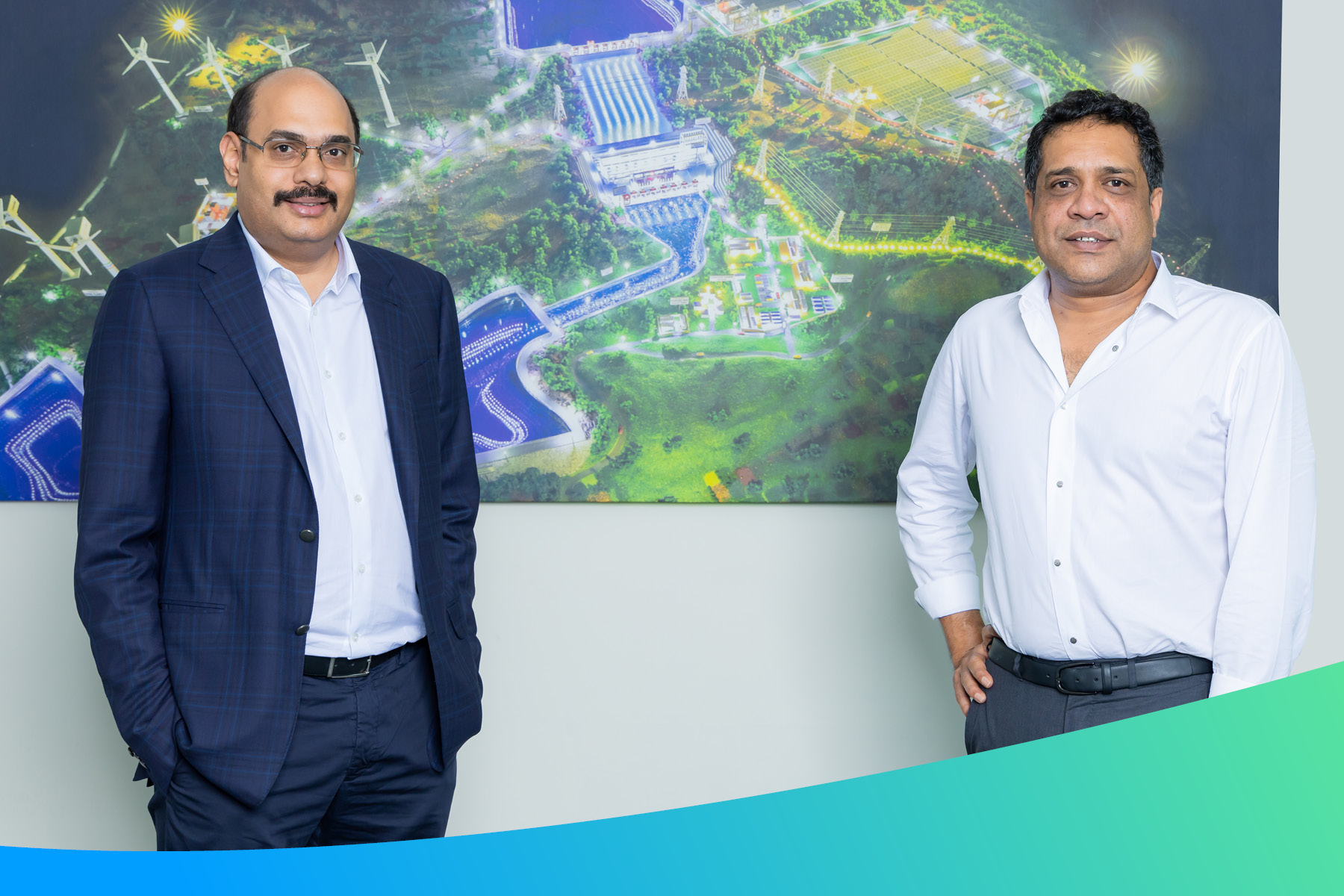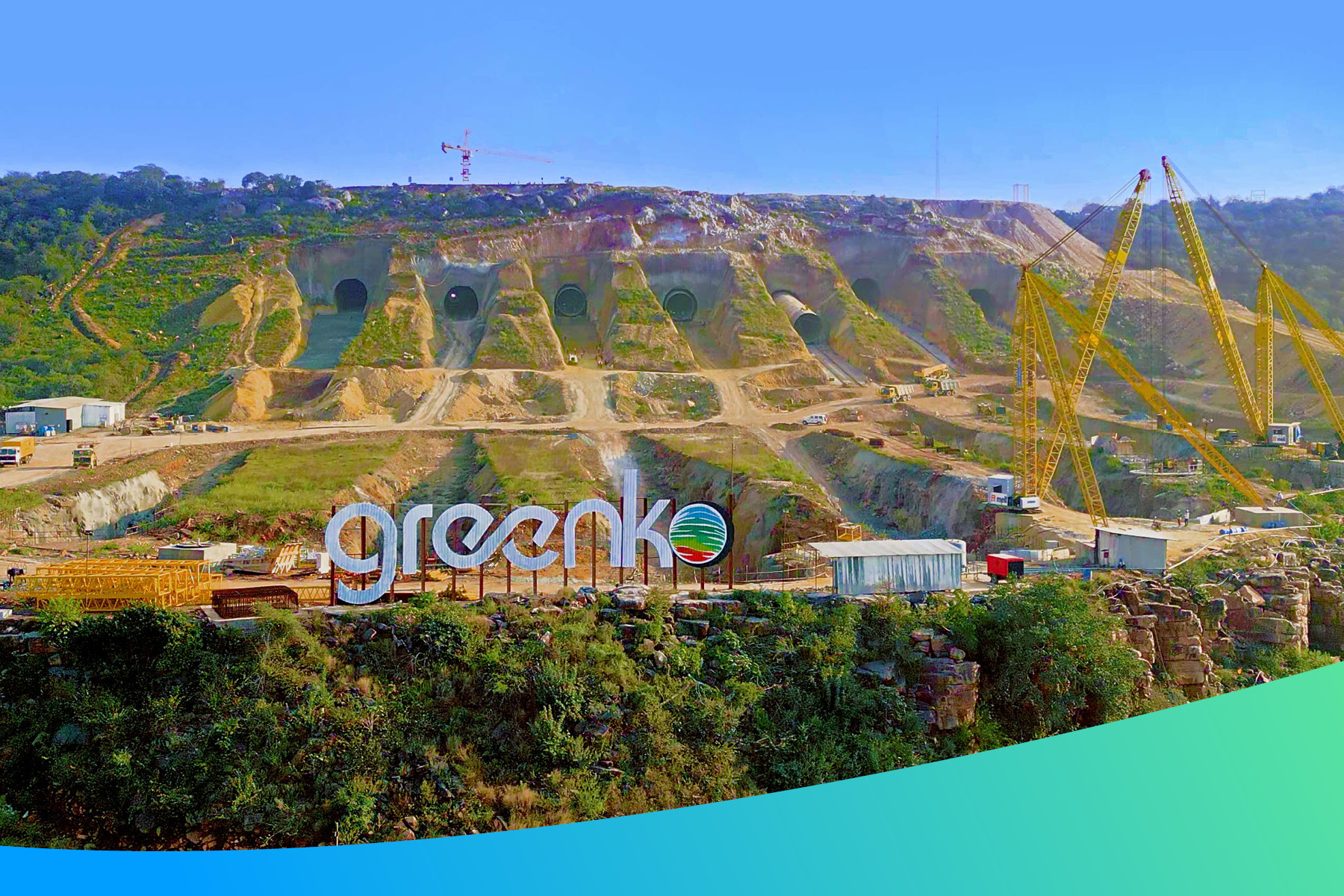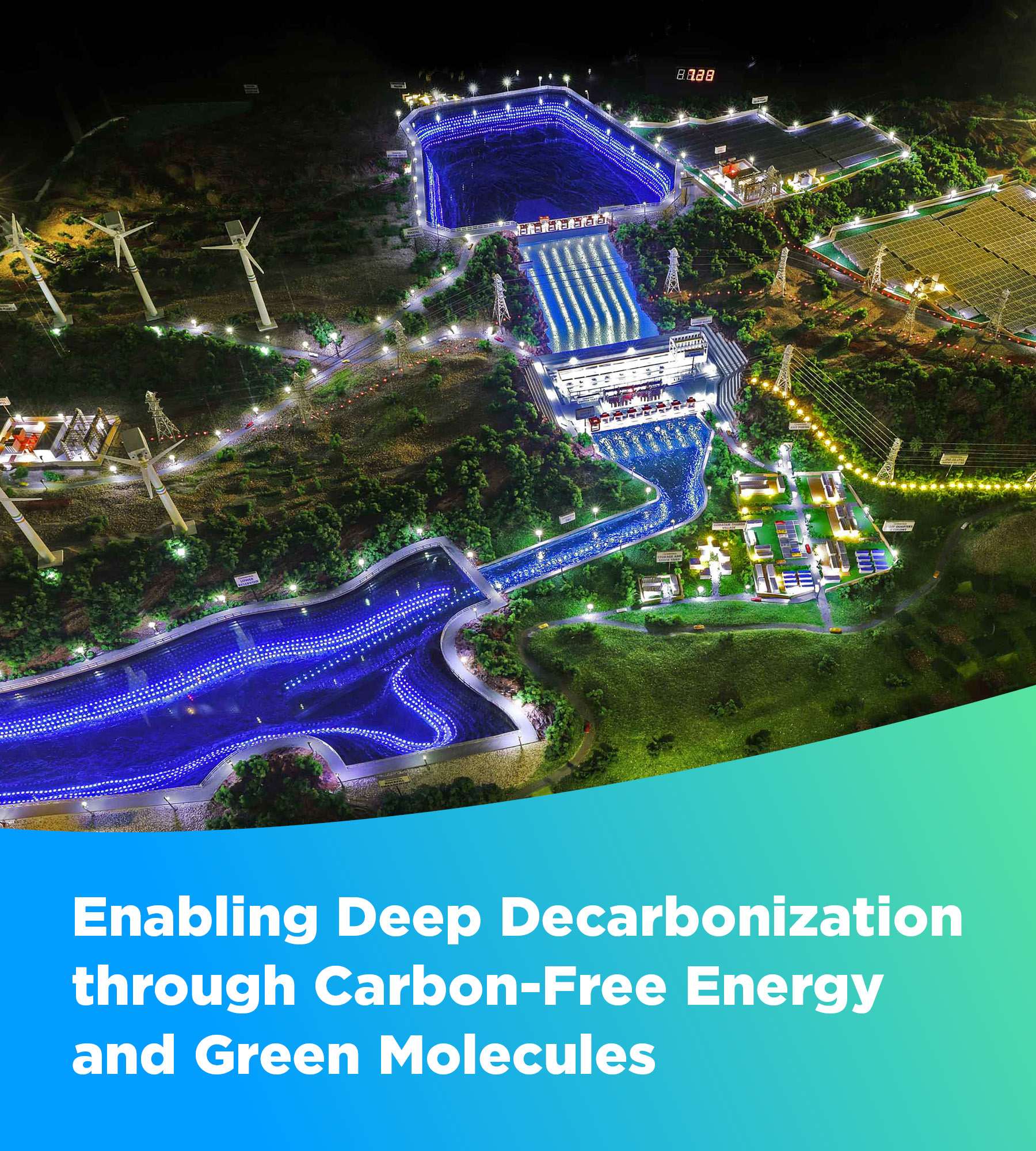Language
You can read the magazine in one of the following languages
Greenko, India’s foremost energy transition company, is developing one of the world’s biggest renewable projects at Pinnapuram, a rural corner of south-eastern Andhra Pradesh.
The scale is inspiring: Pinnapuram is a 1.68 gigawatt Pumped Storage Hydroelectric (PSH) facility, which can effectively transform 4,000 megawatts of intermittent solar and wind energy into firm and schedulable power. Greenko is constructing two reservoirs, including a 49-meter-high dam, boring seven tunnels, assembling turbines, switchgear and thousands of other components.
What makes Pinnapuram a world’s first is the integration of the three different types of clean energy and, in particular, the use of closed-loop PSH for storing power.
Energy generated by the wind and solar farms will be used to pump water uphill from the lower to the upper reservoir at the rate of one billion cubic feet in nine hours. Once needed, the water is released downhill, driving hydroelectric turbines, with gravity doing the work. As a closed-loop system, it will not need any river water once the lower reservoir has been filled, eliminating any local environmental impact.
By integrating this storage capability, Pinnapuram can compensate for the intermittency that plagues conventional renewable energy projects, allowing it to guarantee customers round-the-clock electricity.

Mahesh Kolli (left) and Anil Chalamalasetty (right) founded Greenko in 2006
Anil Kumar Chalamalasetty, Founder and Managing Director, and Mahesh Kolli, Co-founder and Joint Managing Director, founded Greenko in 2006, at a time when India’s economy was expanding so rapidly that demand for power was outstripping its considerable fossil fuel reserves.
The two men, cognizant of India’s natural wealth of sun, wind, water and land, saw a huge opportunity to meet some of that demand from more sustainable sources.
The key was to take advantage of proven, domestic technologies and resources in order to produce their renewable energy at grid parity – for the same cost as thermal power. Four years later, it added wind and in 2016, solar power.
Today, the company has an installed capacity base of 7.3 gigawatts, with over 100 projects spread across 15 Indian states, able to generate over 20 billion units of renewable energy annually. A further eight gigawatts of PSH is under construction.
Once they had solved the cost problem, Greenko focused on improving quality. Because of the intermittency of solar and wind, they discovered that adding more than 10 percent of renewables to the electricity mix actually increased overall costs as more expensive as marginal power sources had to be kept on standby.
A second issue was that the country’s industrial base was not willing to trust ‘unreliable’ renewable electricity. The solution to both problems was to add storage to the mix, to make renewables ‘dispatchable’ – as reliable and flexible as coal or gas.
Greenko’s answer, from 2019 onward, was to introduce closed-loop PSH, which provides a much longer duration than batteries and is also cheaper. This allows Greenko to deliver dependable electricity at a cost of US$60-70 per megawatt hour, compared to US$100-$200 per megawatt hour in the United States or Europe.
Its expertise in renewables is leading Greenko to provide round-the-clock, low-cost renewable energy in support of another type of carbon-free energy – green hydrogen (and green ammonia).
Amid a global investment boom in green hydrogen projects, almost all the hydrogen being used in the industry today is still ‘grey’. In order to make the green variety economical, its cost must be reduced far below the current US$6-8 per kilogram.
A huge advantage is India’s electricity grid, the largest single-frequency grid in the world, which allows electrons to flow throughout the country at a low cost, with no need for generators and off-takers to be geographically close.

The AP 01 IREP at Pinnapuram, Kurnool in south India includes a 1.68 gigawatt pumped storage hydroelectric facility
By providing its pumped storage concept to hydrogen producers, Greenko estimates that green hydrogen can be produced for US$3 per kilogram without direct subsidies – making India one of the world’s lowest-cost producers. Given the growing demand for hydrogen from hard-to-abate industrial sectors, this promises to become a huge market – as much as US$35 billion annually in India alone.
Adding up all its expansion plans, Greenko is on a path to operate 50 gigawatt hours of energy storage by 2027, which can absorb the output of ~60 gigawatt hours of solar and wind. Pinnapuram, with some 10 gigawatt hours of storage capacity, is the first of four such large integrated projects, to be followed by three more in the Indian states of Karnataka, Madhya Pradesh and Rajasthan.
With all that energy coursing through its storage facilities and transmission lines, the group has built a digital platform that links these with its data centers to manage those complex flows. Greenko now provide this platform to customers and third parties, helping them to manage their electricity needs in real-time.

